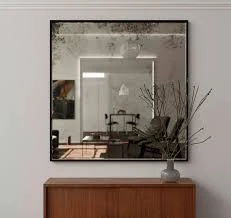

Understanding Low-E Plus Glass A Modern Solution for Energy Efficiency
In the ever-evolving landscape of building design and construction, the demand for energy-efficient materials has never been more pronounced. One of the standout innovations in this area is Low-E Plus glass, a type of glazing that promises to enhance both energy efficiency and comfort within residential and commercial environments. But what exactly is Low-E Plus glass, and why is it increasingly becoming the go-to choice for architects, builders, and homeowners alike?
What is Low-E Plus Glass?
Low-E stands for low emissivity, which refers to the glass's ability to reflect thermal radiation while allowing visible light to pass through. This property is achieved through a special coating that is applied to the glass surface. Low-E Plus glass takes this technology a step further by incorporating additional features that improve its thermal performance even more. Typically produced with multiple layers, Low-E Plus glass can minimize heat transfer, thus reducing the amount of energy required to heat or cool a building.
Energy Efficiency Benefits
The primary benefit of Low-E Plus glass lies in its energy-saving capabilities. By reflecting heat during the summer and retaining warmth during the winter, this type of glass helps in maintaining a consistent indoor temperature. This not only enhances comfort for occupants but also results in significant cost savings on energy bills. According to various studies, homes and buildings equipped with Low-E Plus glass can reduce energy consumption by up to 30% compared to traditional glazing options.
Moreover, by minimizing the need for heating and cooling, Low-E Plus glass is also a more environmentally friendly option. It directly contributes to lower carbon emissions, making it an ideal choice for those who are keen on sustainable building practices.
Enhanced Comfort

Comfort is a crucial aspect of any living or working space, and Low-E Plus glass plays a vital role in achieving this. One of the notable features of Low-E Plus glass is its ability to reduce glare without compromising on daylighting. This ensures that spaces are bright and inviting while minimizing the discomfort often associated with excessive sunlight.
In addition to glare reduction, Low-E Plus glass also helps in maintaining a more consistent indoor temperature, minimizing cold drafts near windows during winter months. As a result, occupants can enjoy a more pleasant and stable indoor environment throughout the year.
UV Protection
Another significant advantage of Low-E Plus glass is its ability to block harmful ultraviolet (UV) rays. Prolonged exposure to UV radiation can lead to fading of furniture, flooring, and artwork. Low-E Plus glass effectively filters out a substantial portion of these rays, helping to preserve the aesthetic and longevity of interior furnishings. For homeowners and businesses investing in their spaces, this added layer of protection is a compelling reason to choose Low-E Plus glass.
Aesthetic Appeal
Beyond its functional benefits, Low-E Plus glass also offers aesthetic advantages. The sleek, modern appearance of this type of glazing can enhance the overall look of a building. With various options available, including different tints and finishes, architects and designers have the flexibility to create striking visual effects while still maintaining energy efficiency.
Conclusion
In summary, Low-E Plus glass is a remarkable material that embodies the perfect intersection of design and functionality. With its superior energy efficiency, enhanced comfort, UV protection, and aesthetic appeal, it is no surprise that Low-E Plus glass is becoming a preferred choice in contemporary construction. As we continue to prioritize sustainability and energy conservation in our buildings, Low-E Plus glass stands out as a smart solution for a brighter and more efficient future.